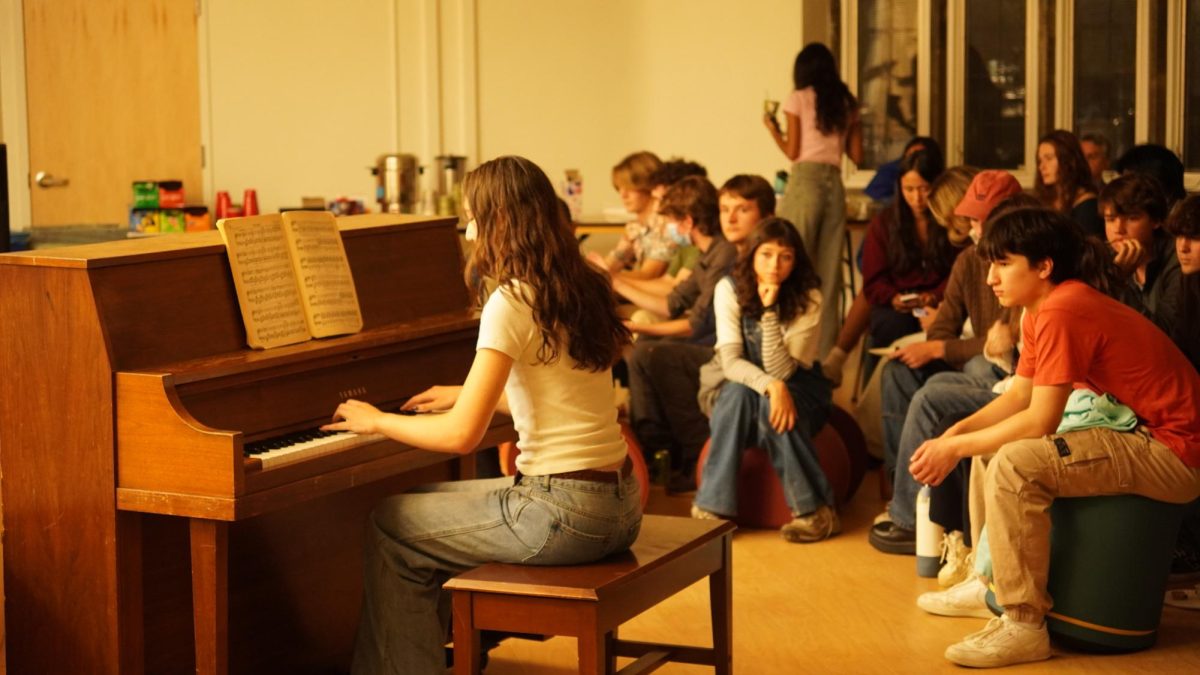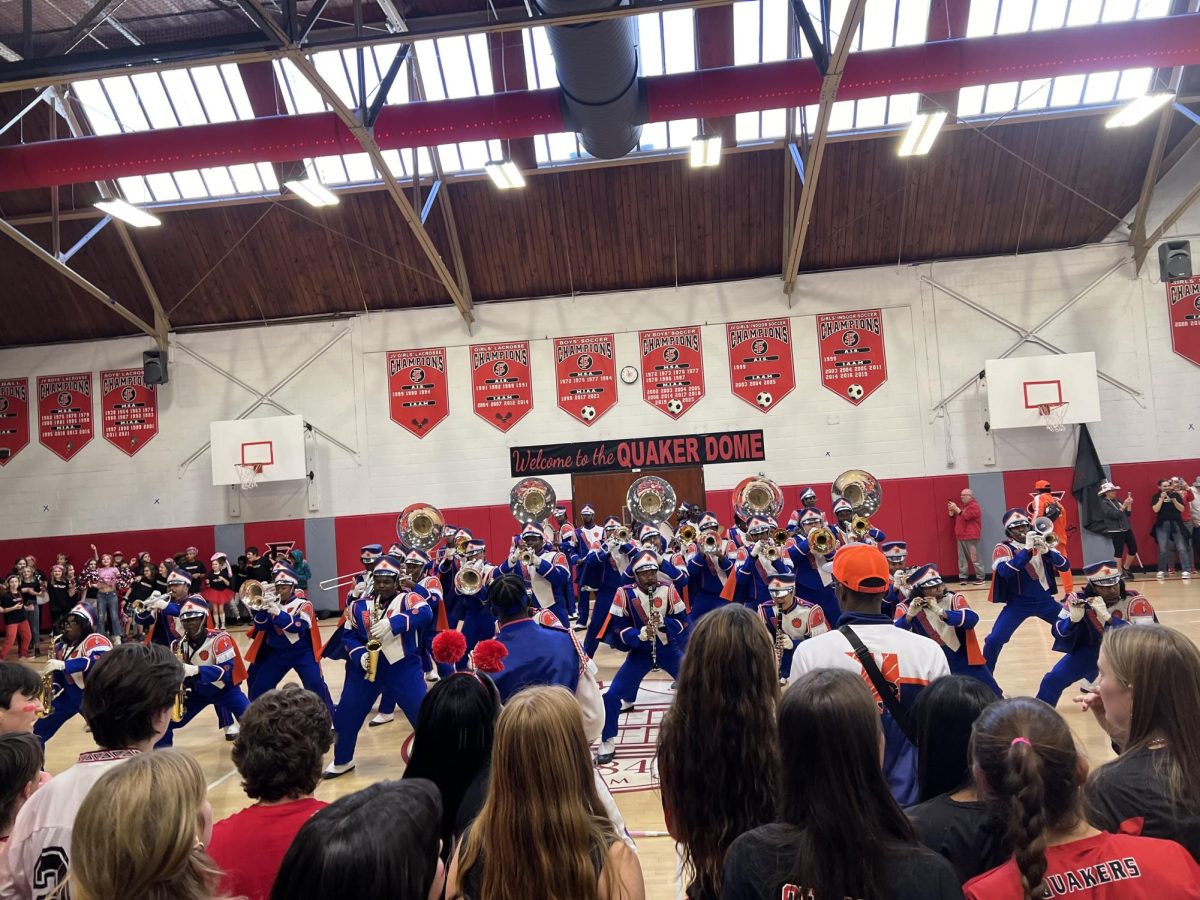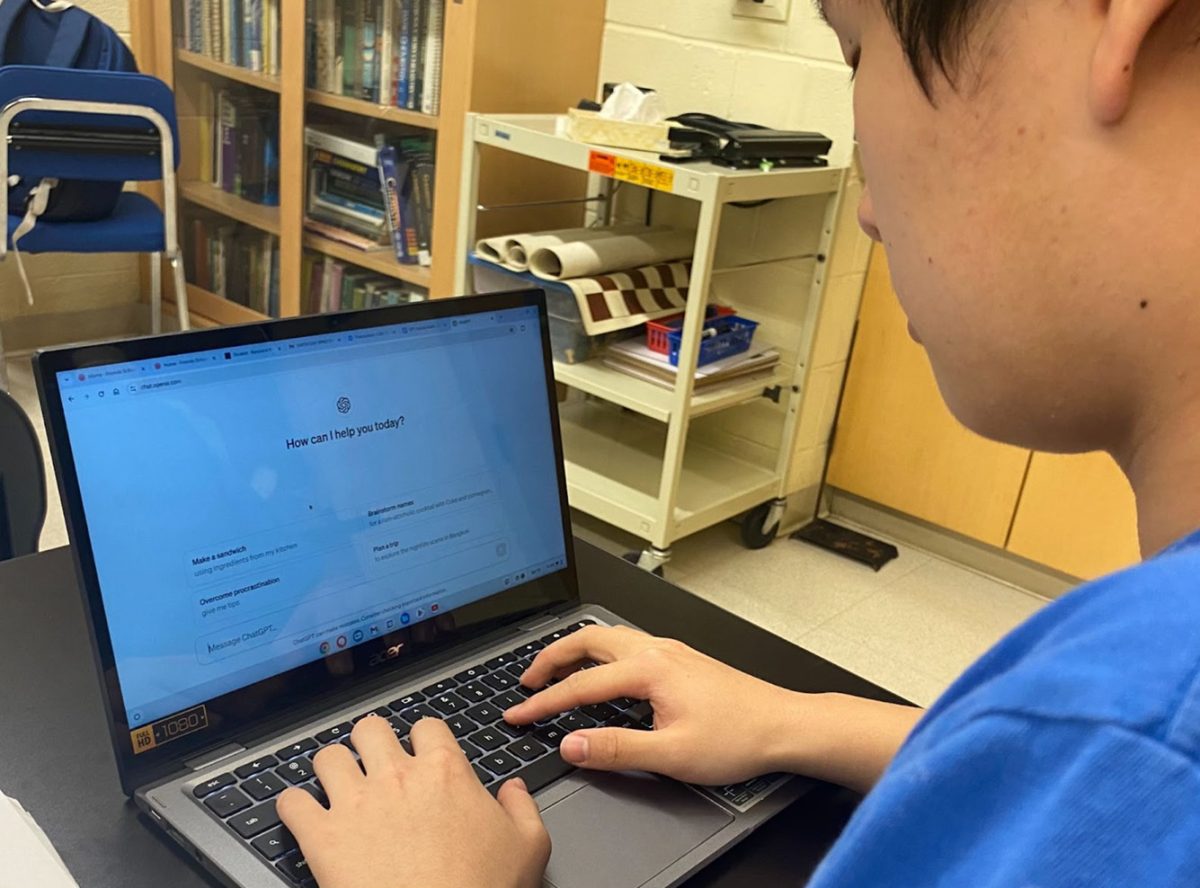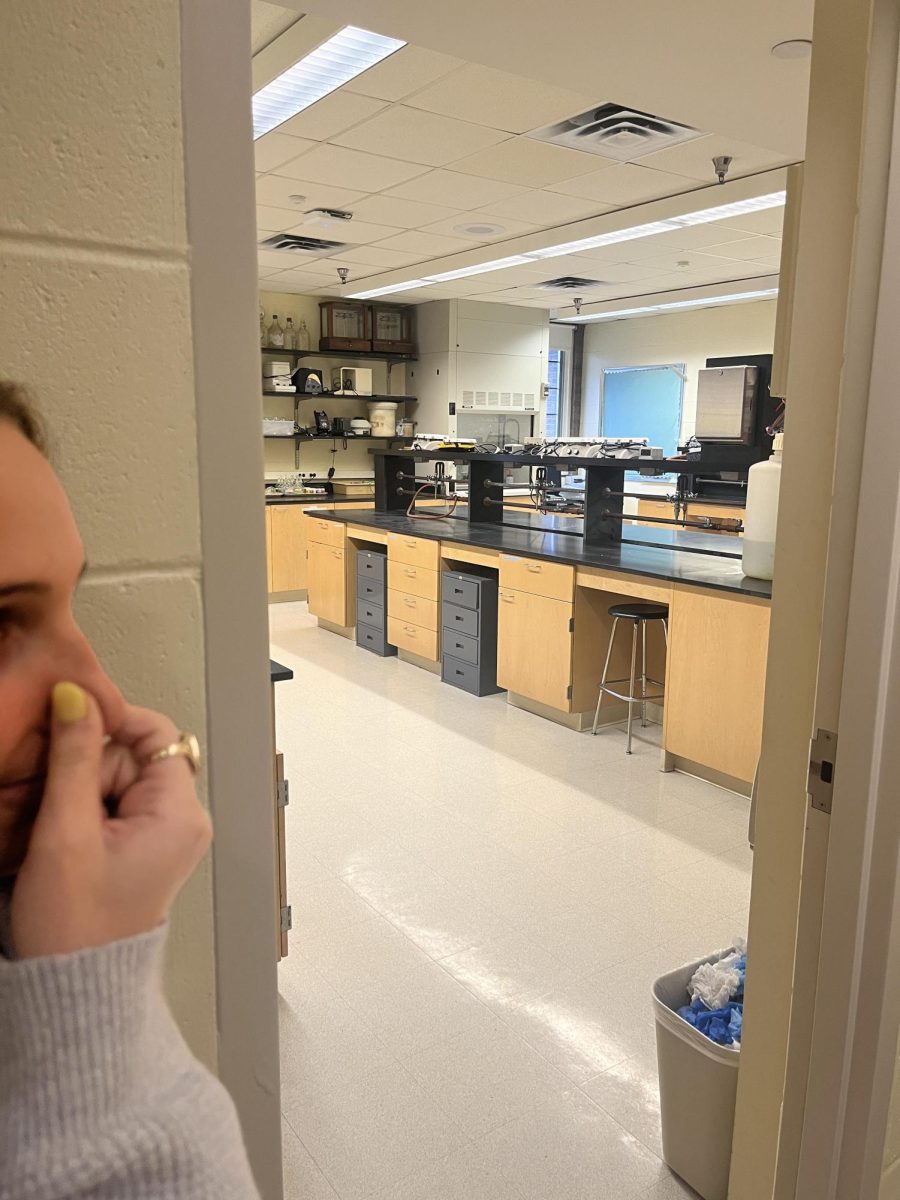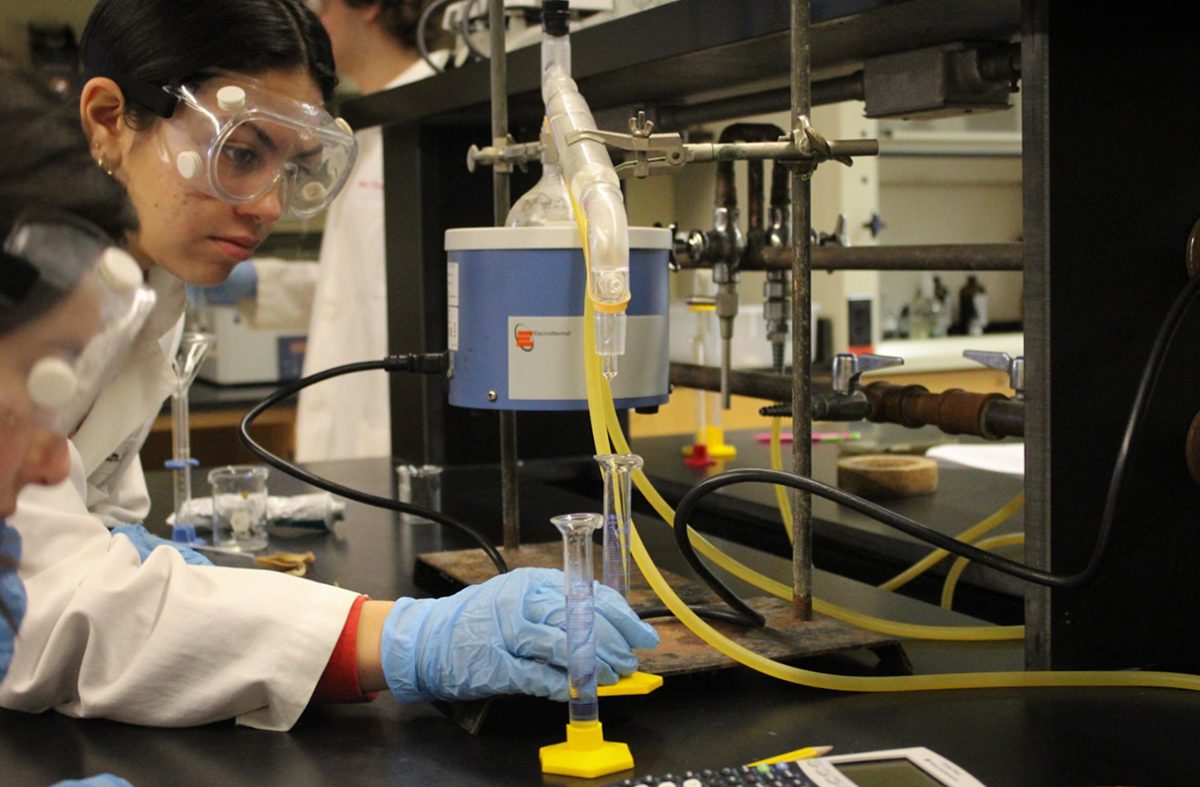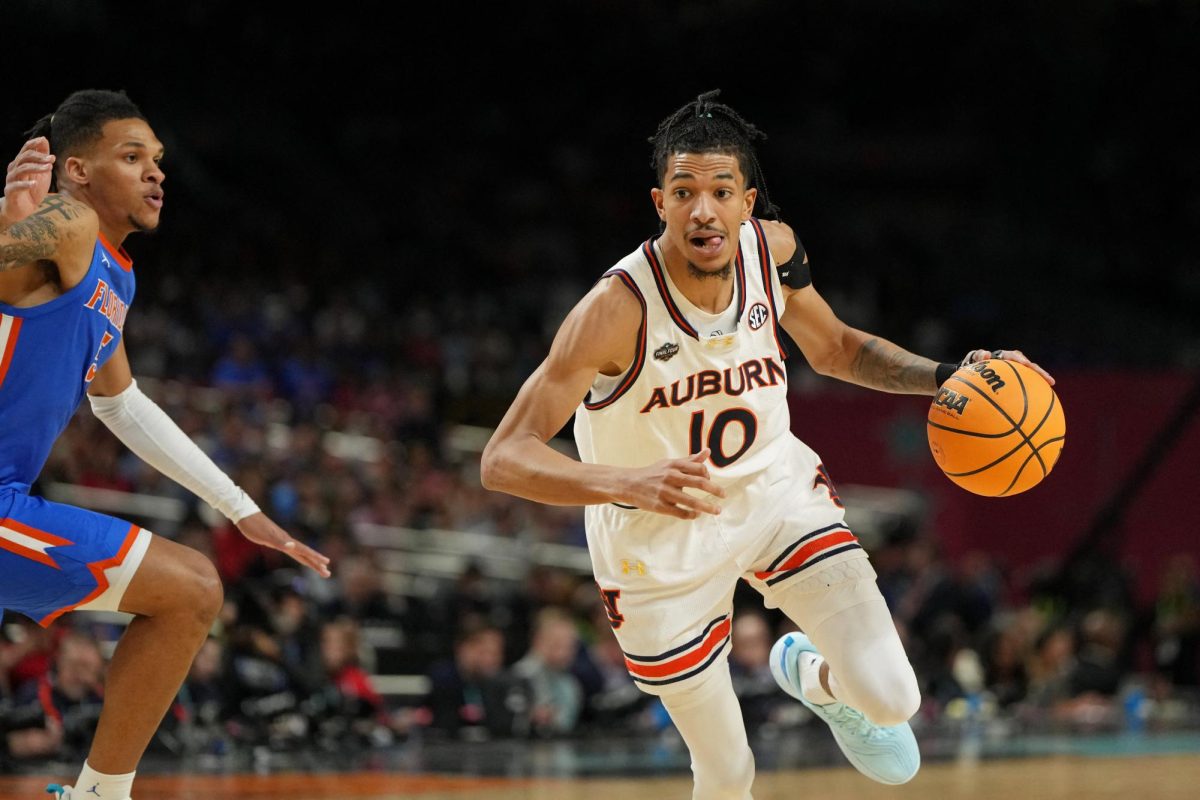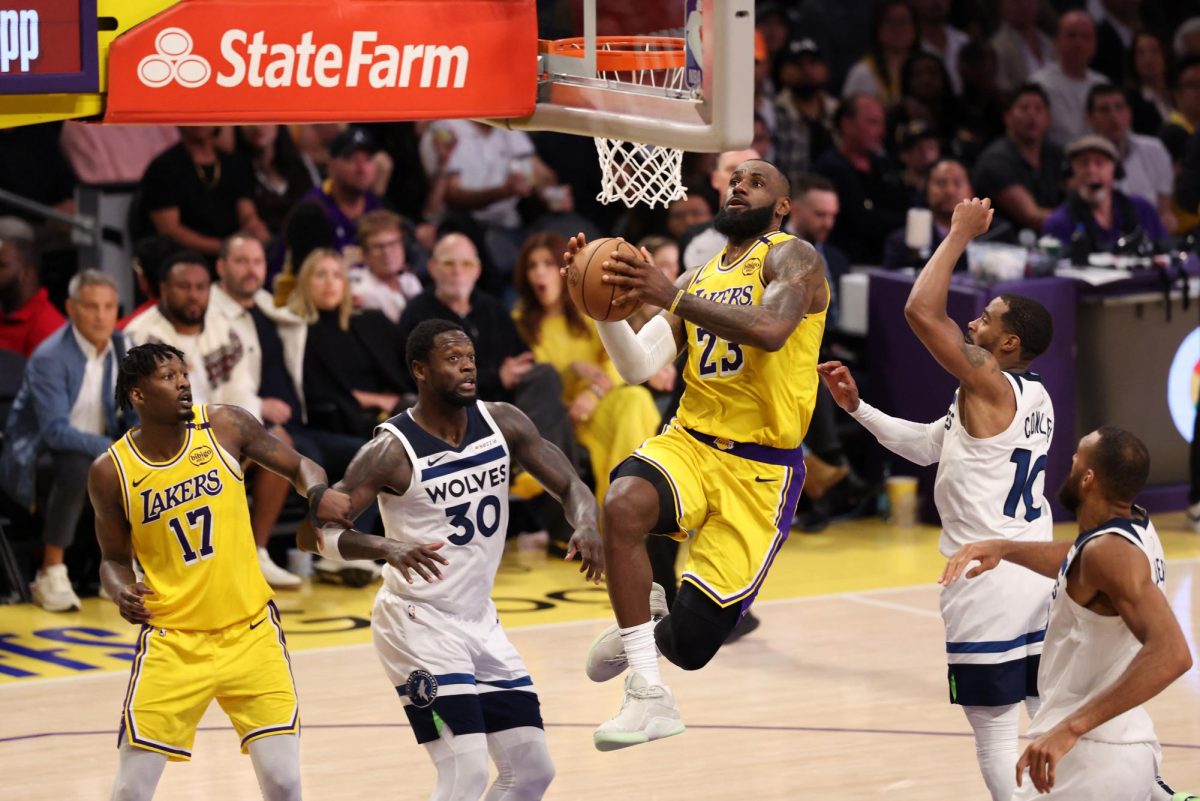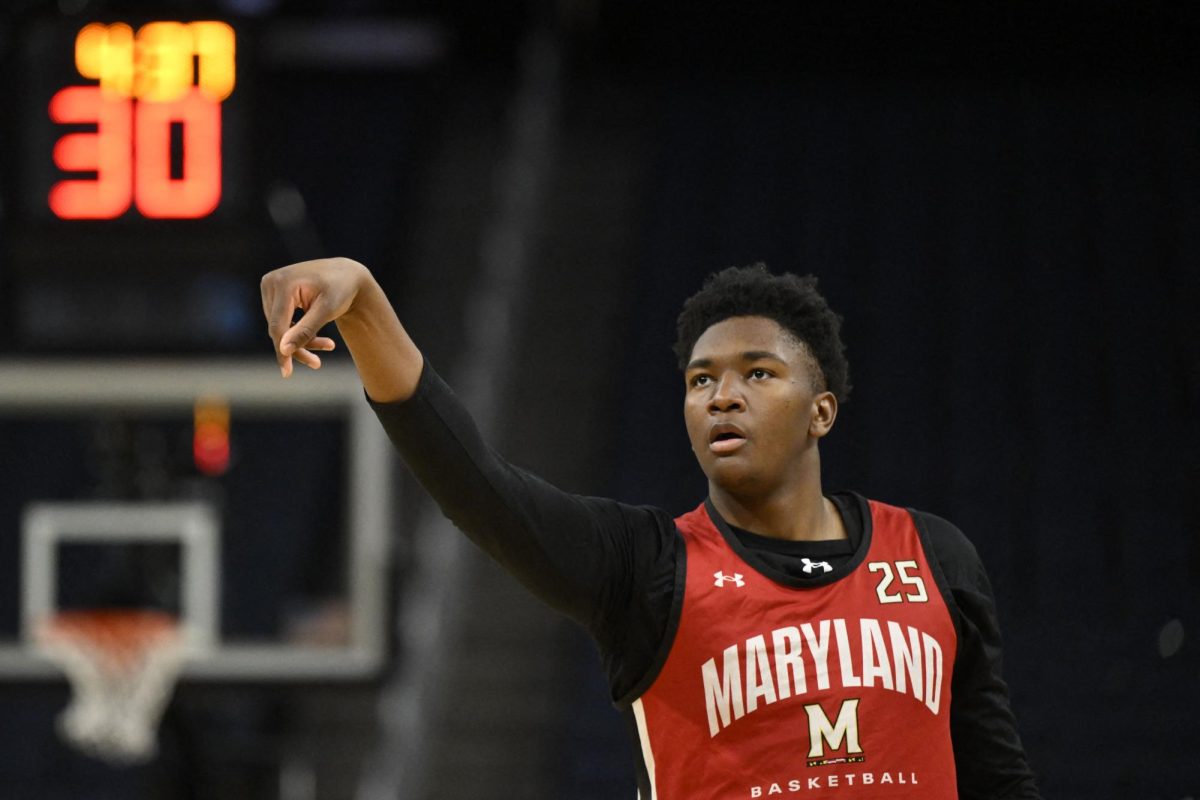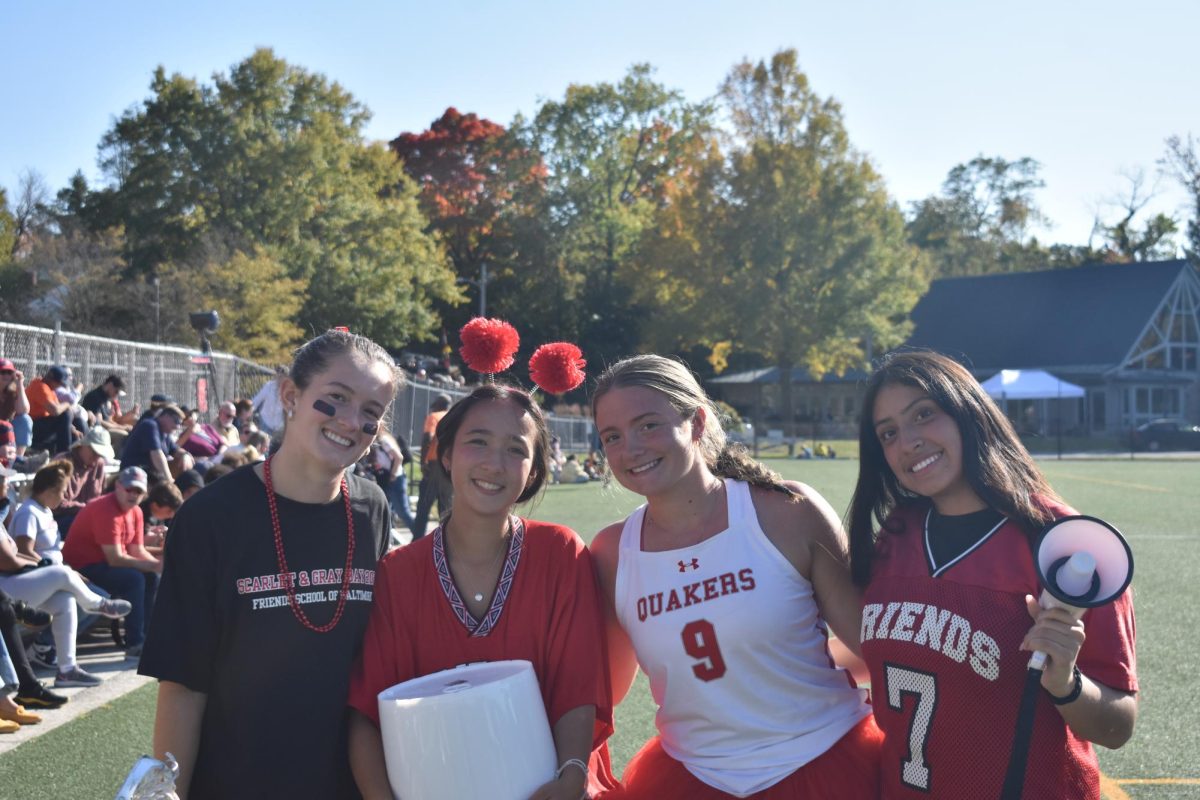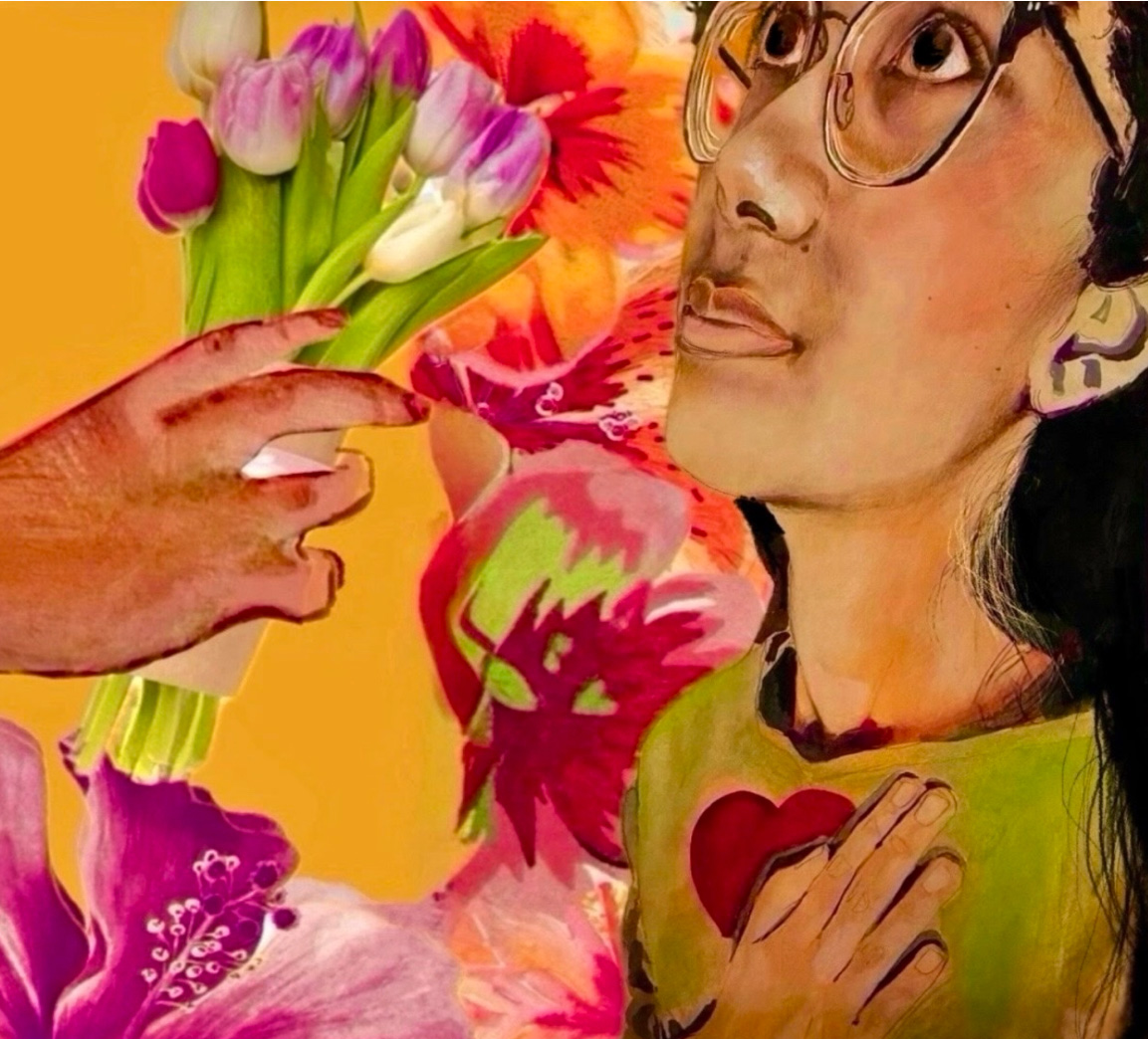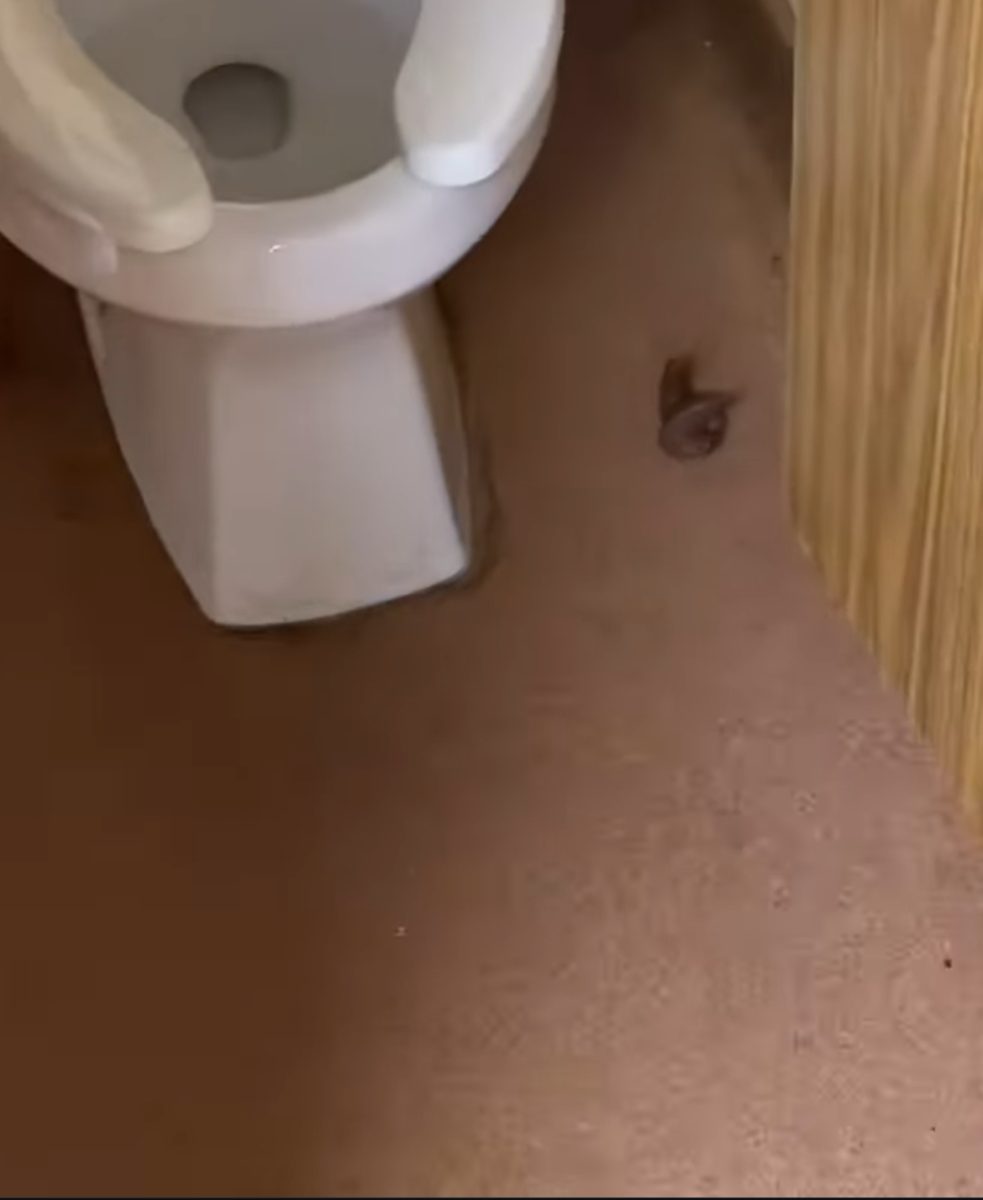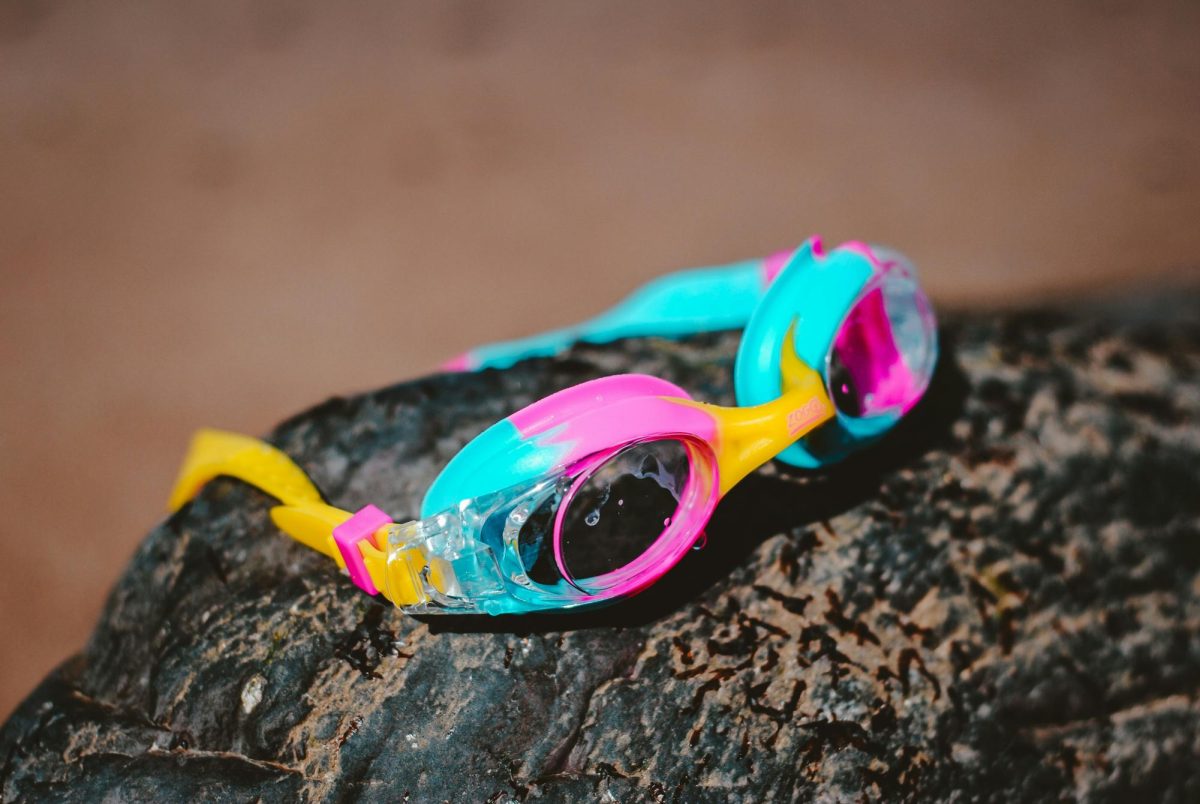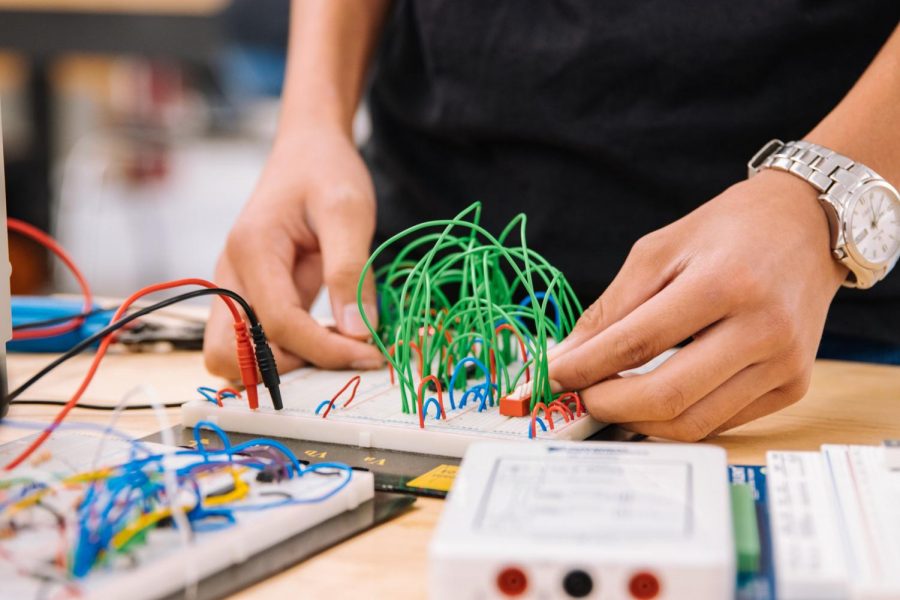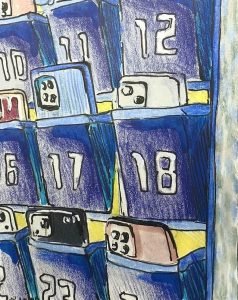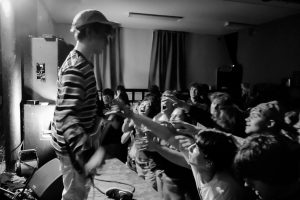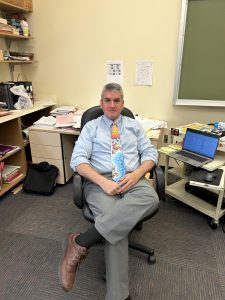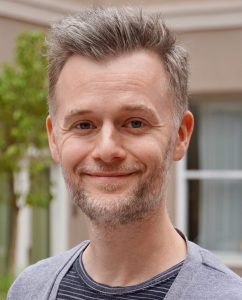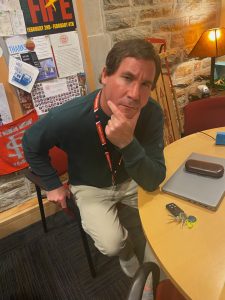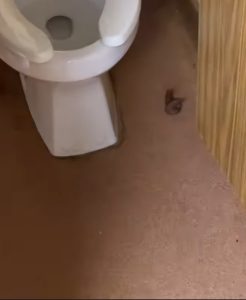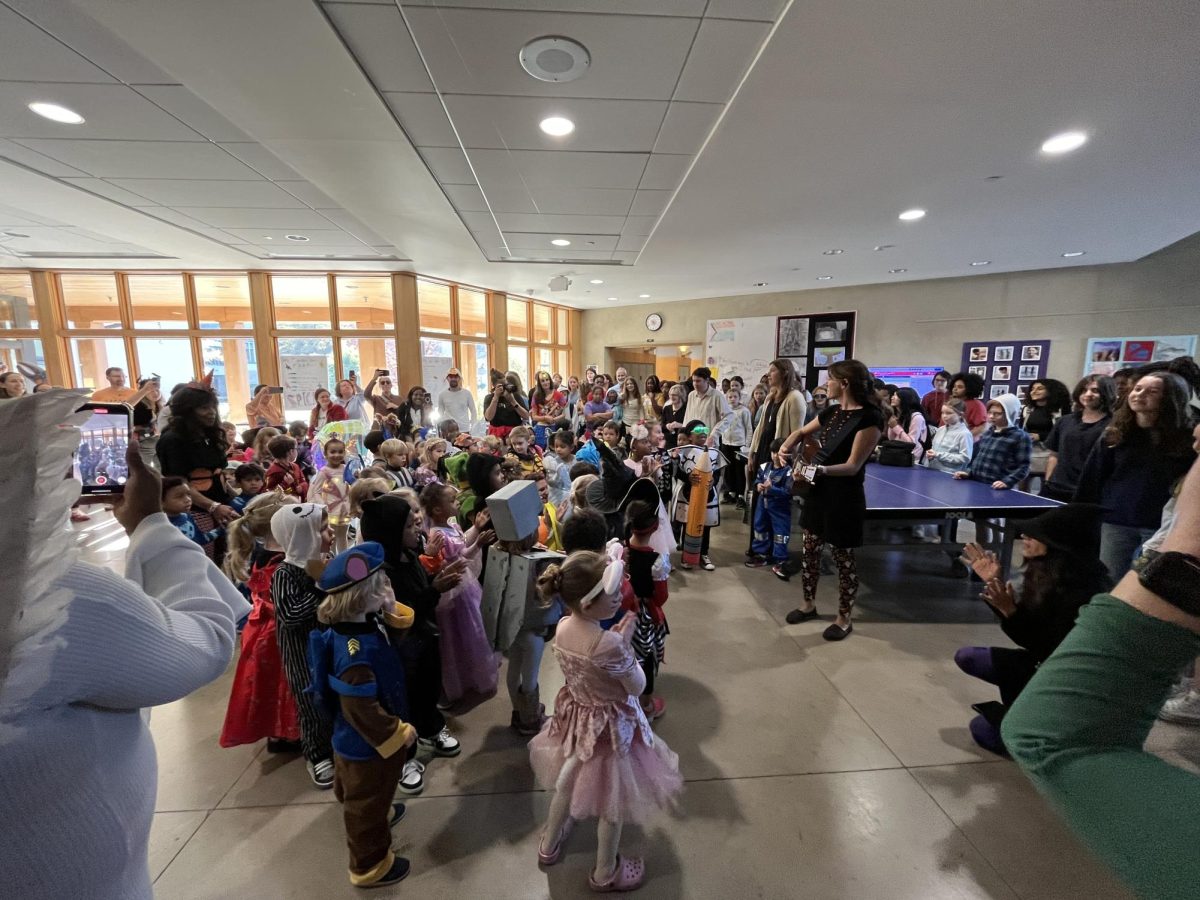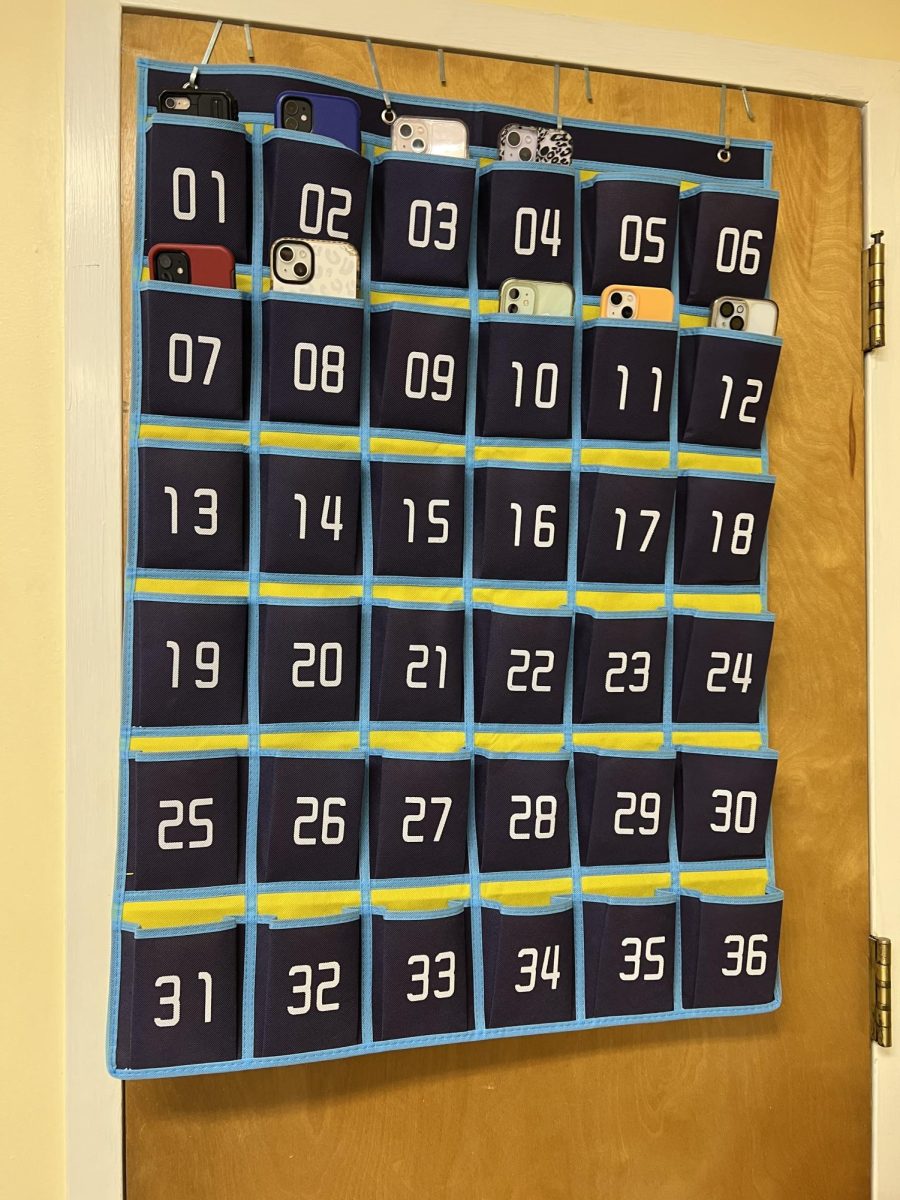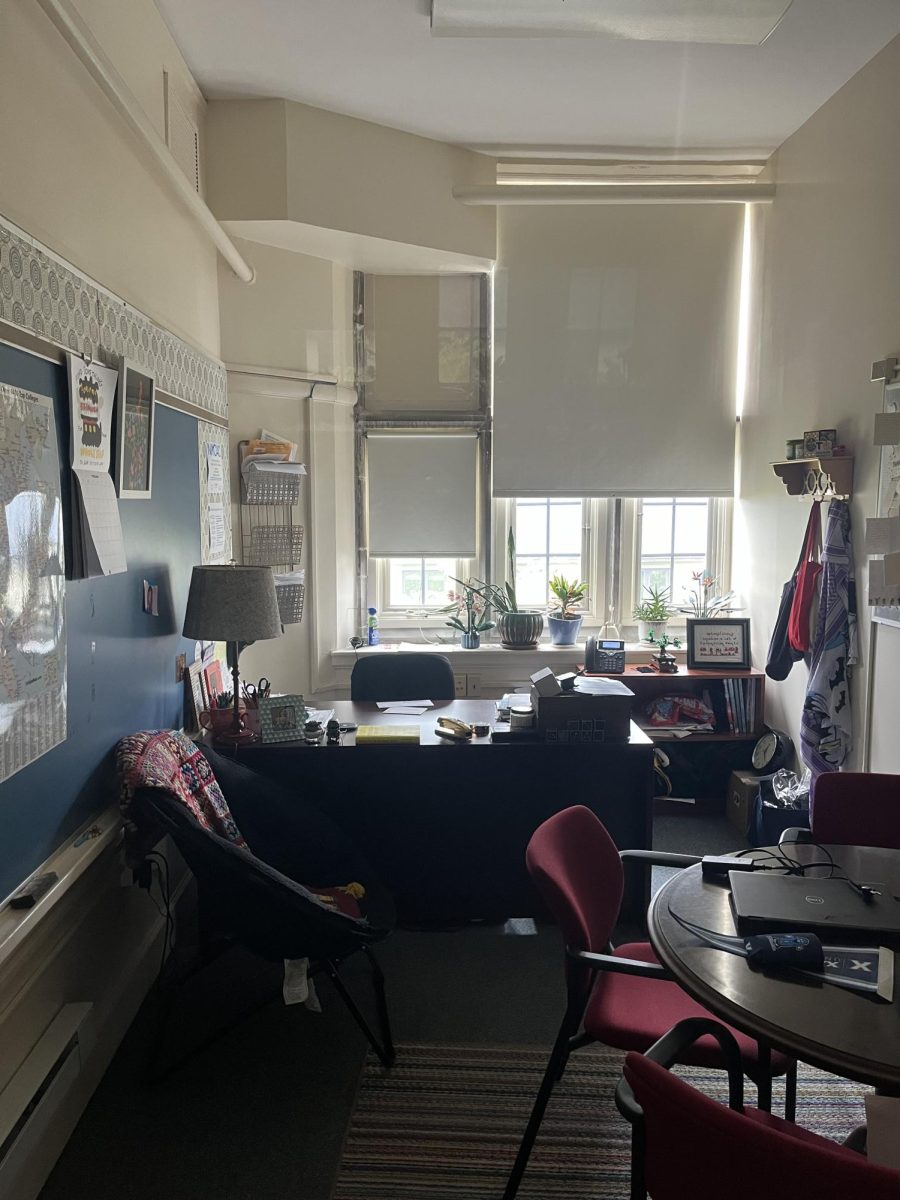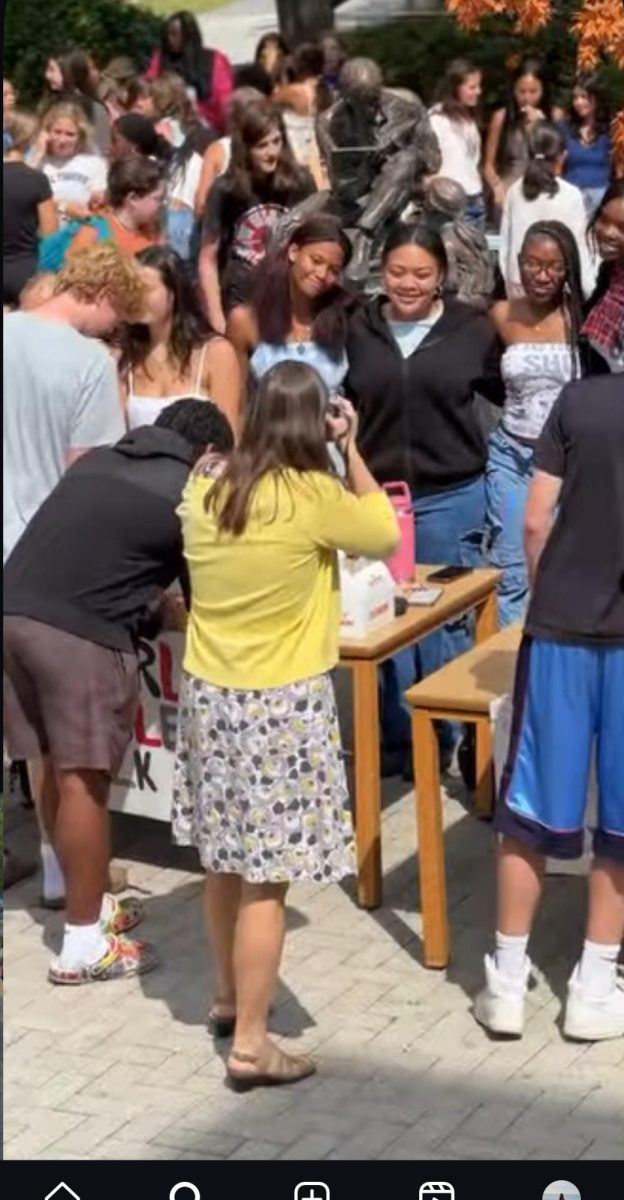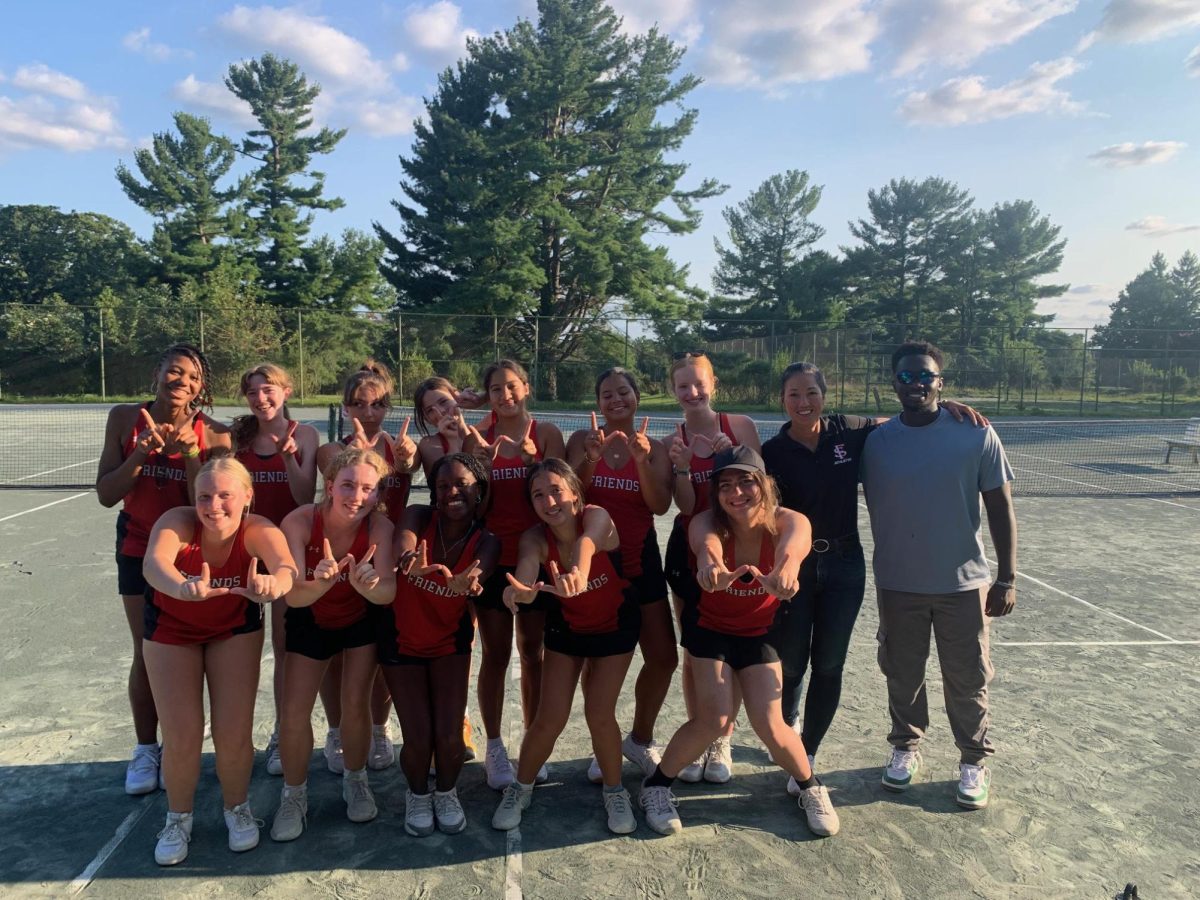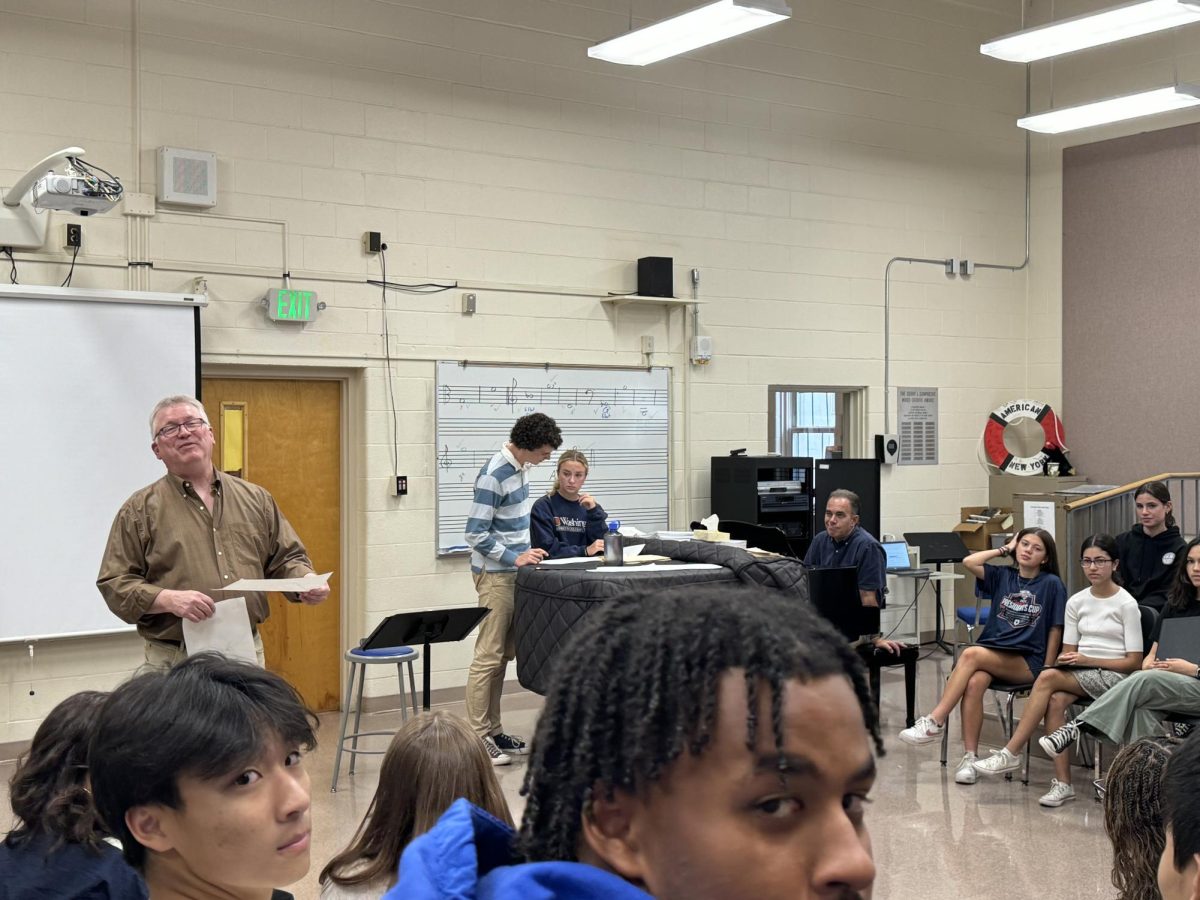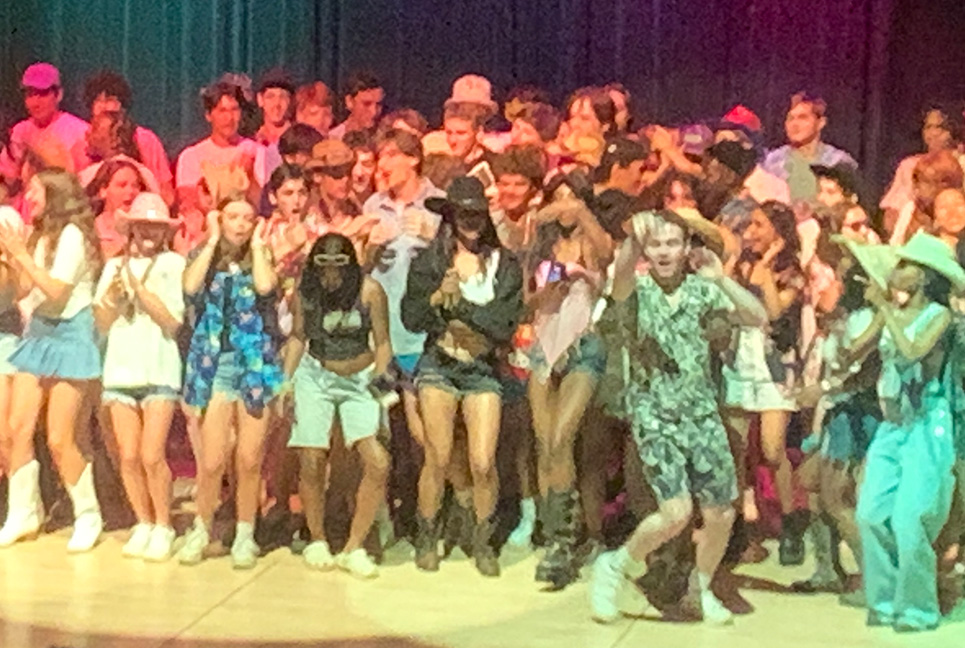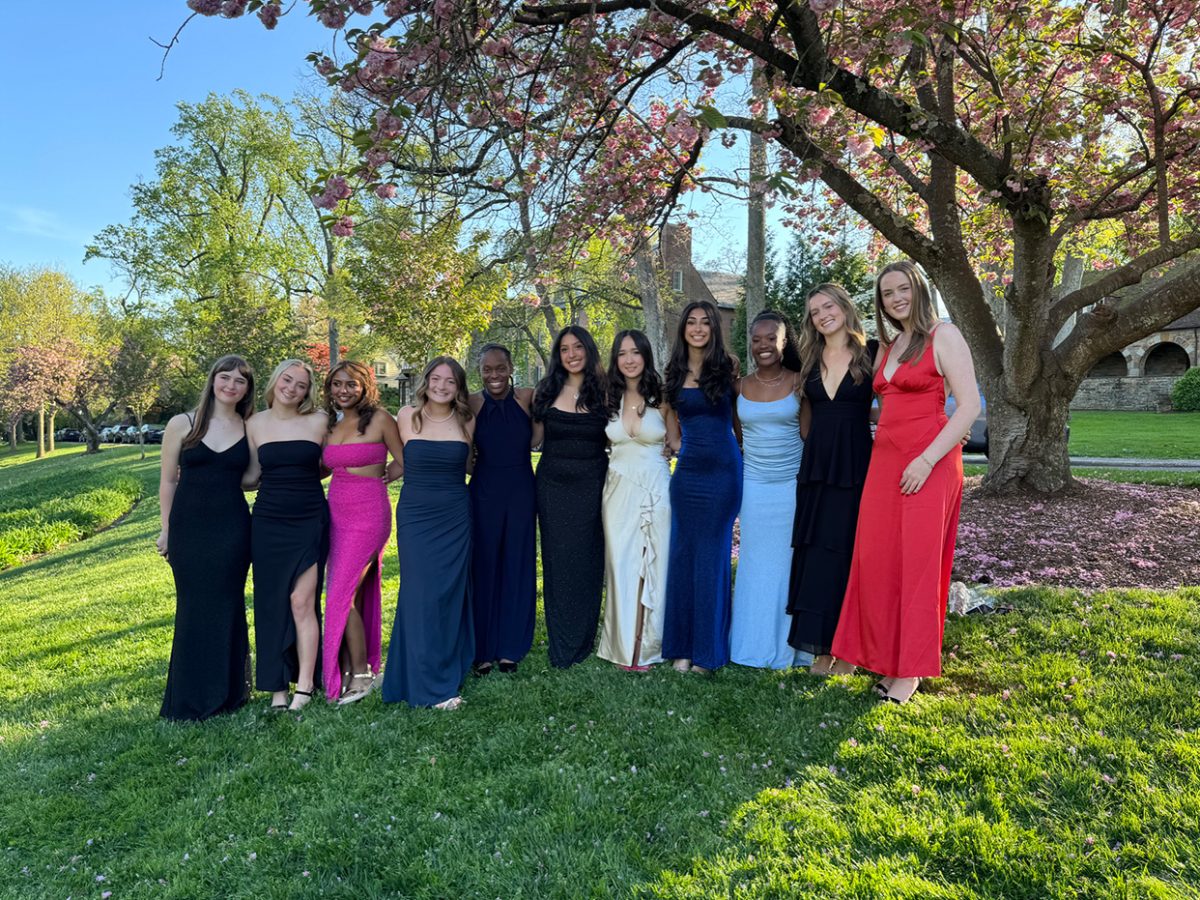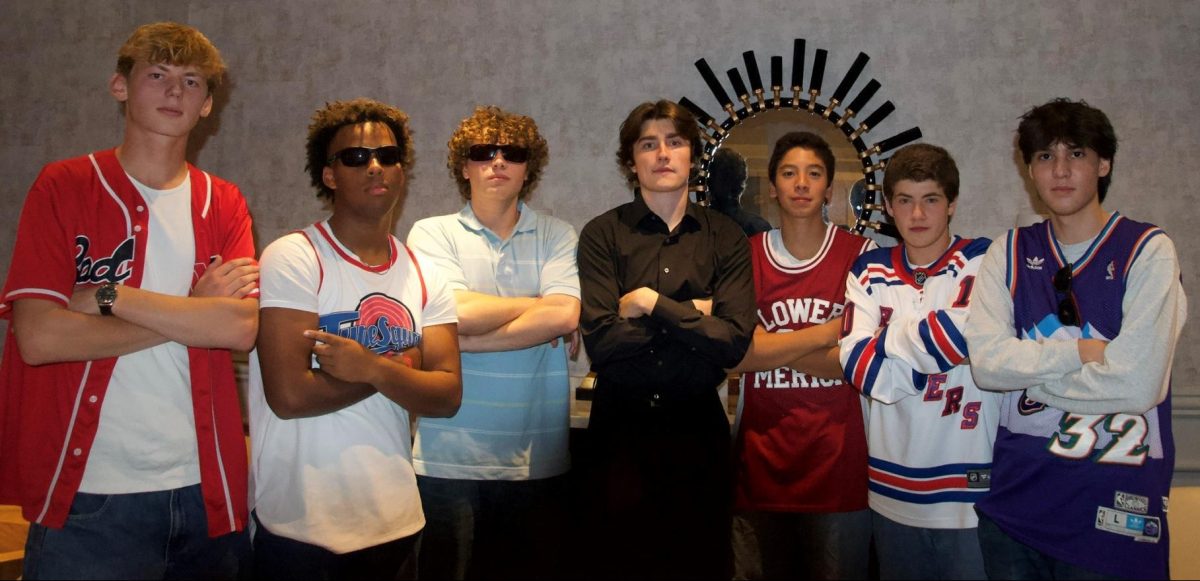Gender Imbalance in STEAM Classes
The gender imbalance in STEAM fields today starts in high school. Friends is trying to do something about it.
March 20, 2021
Imagine meeting four scientists leading a big project. Although this project will affect everyone in the world, there is only one woman leader. And in their team of 40, there are a mere 10 women. In many STEAM fields today, this unbalanced ratio is a harsh reality.
And it starts in high school.
“I think that it would be about a third,” Friends science teacher Viktor Polyak estimates as the percentage of his students who identify as female. Mr. Polyak teaches Accelerated Physics and Special Topics in Physics, and advises the Robotics Club – all STEAM classes and activities.
STEAM stands for Science, Technology, Engineering, Art, and Math: a field that, to this day, is still widely male-dominated. (Sometimes it is also abbreviated STEM, leaving out the A for art.) In 2017, a US Commerce Department report found that “women filled 47 percent of all U.S jobs in 2015 but held only 24 percent of STEM jobs.”
While these figures are on a national level, much of this gender gap is formed in high school. Despite being a school with many opportunities for all in the STEAM field, Friends is still sometimes no exception.
Polyak and I went through the numbers, and found there were around 16 female students in all of his accelerated physics classes, out of 47 total. That is about 34 percent. His Special Topics of Physics class had only four girls out of 13, or 31 percent.
Physics is not the only department in which the amount of girls is below half.
“My computer science class has one girl. We had four last year and the other dropped, but there are only seven of us [in total],” says Alex House, a junior involved in many STEAM activities, including Advanced Calculus and Advanced Computer Science classes, and the Robotics and Programming Clubs. “It’s definitely a smaller portion, but they’re definitely there.”
But not all classes have such a striking lack of female students.
Heather Romney, who teaches classes in Creative Coding, Adaptive Design, and Art, Technology, Media and Design (ATMD) says she has one “creative coding class that is all female, and then I have another class that’s all male. I’d say [in general] they’re 50/50. Sometimes ATMD tends to go a little boy heavy, but the rest of the classes are 50/50 and now ATMD is half and half.”
Clubs can also display a gender imbalance.
“In Robotics [there are] around four [female students], and in Programming club three or four,” says sophomore Alana Taylor, who is also involved in STEAM through her Java class and being a club co-head for Girls Who Code. “For clubs like Programming Club and clubs like Robotics, it’s many more guys than there are girls in our club.”
While female students already seem to be in the minority in STEAM classes, the number who are also part of other minority groups, such as racial minorities or the LGBTQ+ community, seem even smaller.
Out of her two sections of Accelerated Geometry with Algebra, 9th grade Math teacher and advisor to Girls Who Code Claire Cunliffe says, “there are two female-identified students who also identify as people of color, and then there are two female-identified students who also identify as like LGBTQ+.”
Although this seems very unequal, Polyak makes a good point as he says, “looking at racial demographics, that’s going to be a much smaller percentage, but obviously we’re pulling from the demographics here at Friends school which skews towards a very white population.”
However, female minorities not being in STEAM classes is not always the case.
“All the girls in my coding class are females of color,” says Ms. Romney.
While the percentage of female students in STEAM activities at Friends may be low, the amount of participation from these students does not seem as unbalanced.
“The fraction between the amount of people is smaller, but I think the participation is pretty even, especially since a lot of the guys tend to not want to have to participate during class,” says Alex with a laugh.
Recently, Friends has been doing a lot more to encourage girls to be more involved in STEAM.
“Last year we had a big STEAM fair that was led by a group of Upper School girls, and we invited all the female-identified 8th grade students from the Middle School to come. And that was a really inspirational event and I’m trying to think of how we’re going to put it on this year in our digital world,” says Ms. Cunliffe.
“Girls Who Code has been awesome,” she continues. “We’ve had over 20 students throughout the year, all the way from 2nd grade to 12th grade. And then we’ve had some alums come back, and that’s awesome.”
Girls Who Code is a cross-divisional club that works to empower girls and other minority groups to be more involved in technology. Every week, the club hosts a safe, less-competitive place for girls and other students to explore their interest in these topics and apply them to the real world.
Even though this is a step in the right direction, many also offer their own suggestions for what Friends could be doing better.
“I think we have some programs, but I think there can be more help from the teachers, encouraging and supporting girls to continue following those paths,” Alana says. “Some teachers have been here for a long time, and they have a method and sometimes they don’t want to present girls new options because they’re so used to what they already know.”
Romney says she thinks Friends should advocate more for the classes it already has, so that more people, of all genders, will join.
“If you look at what other schools are offering, we’re really not that far behind, but we could expand into biomedical, we could expand our engineering offerings, but other than that we’re pretty on par with what everyone else is offering,” says Romney. “It’s just that people don’t know about it.”
There’s still a long way to go in having more female and other minorities in STEAM related fields.
To put it simply, as Alana says, in the coming years, “I just hope there’s more girls in STEAM.”

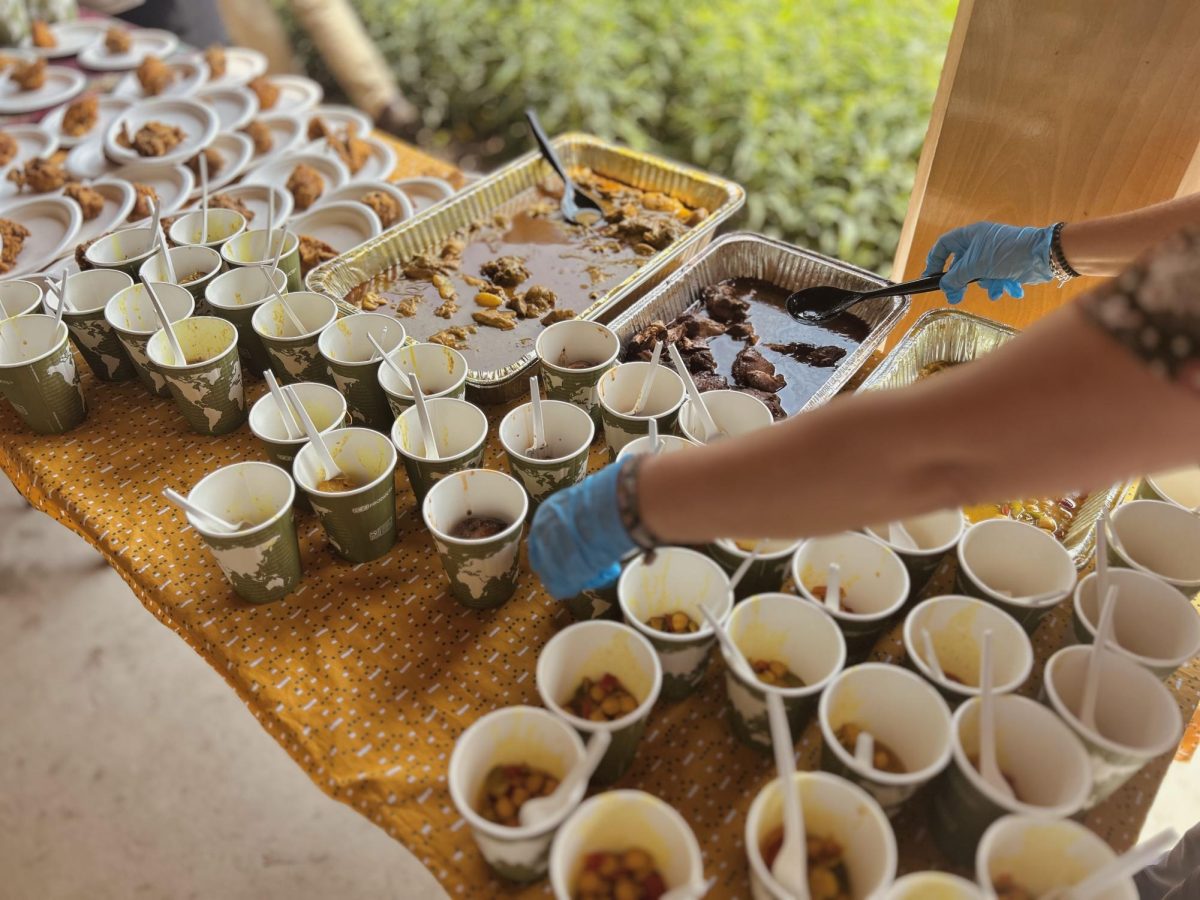
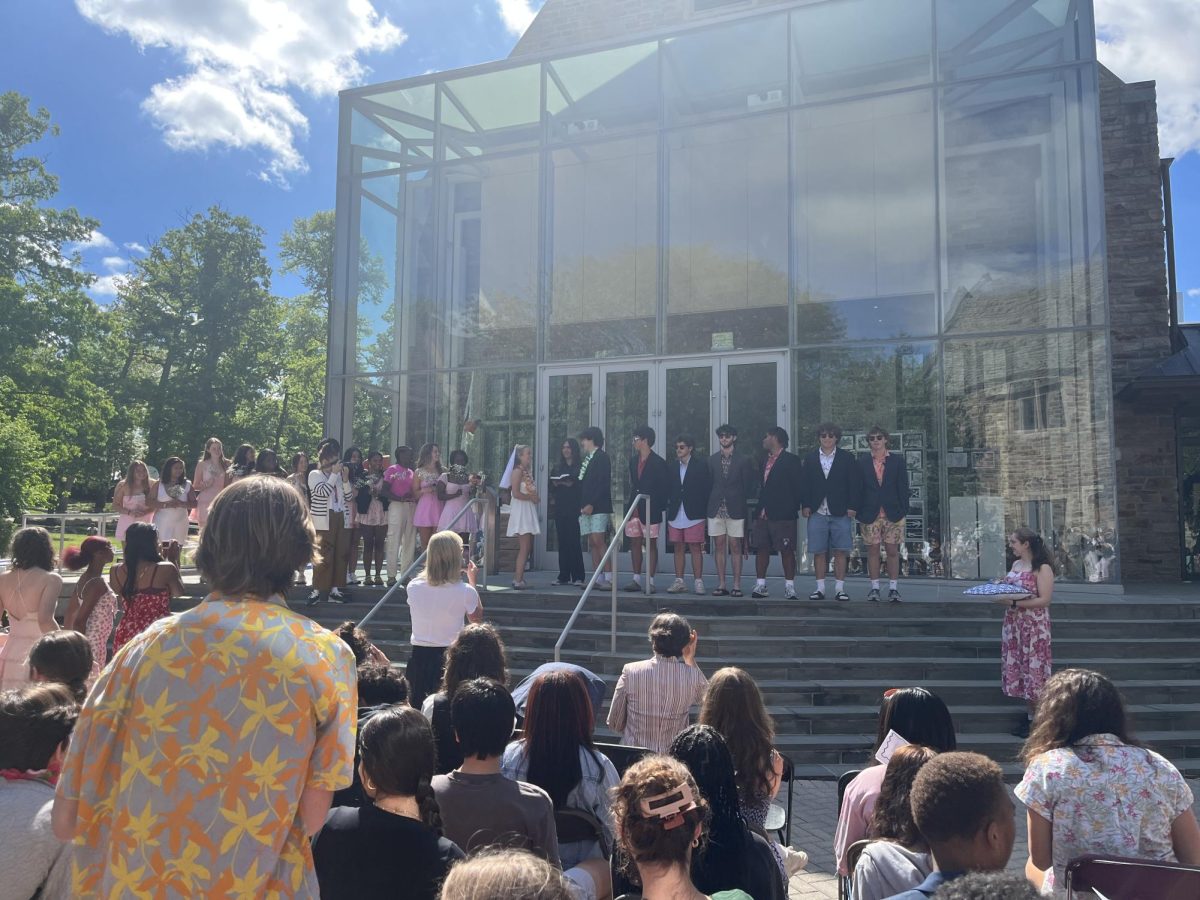
![A Phone Ban at Friends? [Podcast]](https://thequakerquill.org/wp-content/uploads/2025/05/magenta-VrRT19_ZjUY-unsplash-1200x900.jpg)
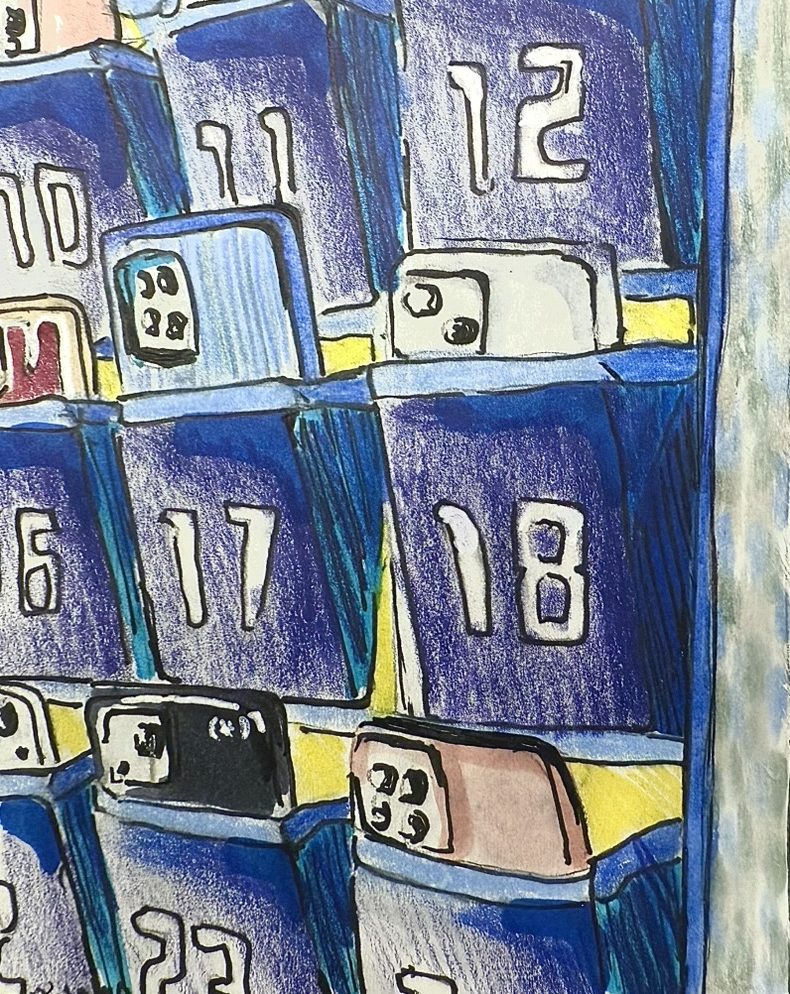


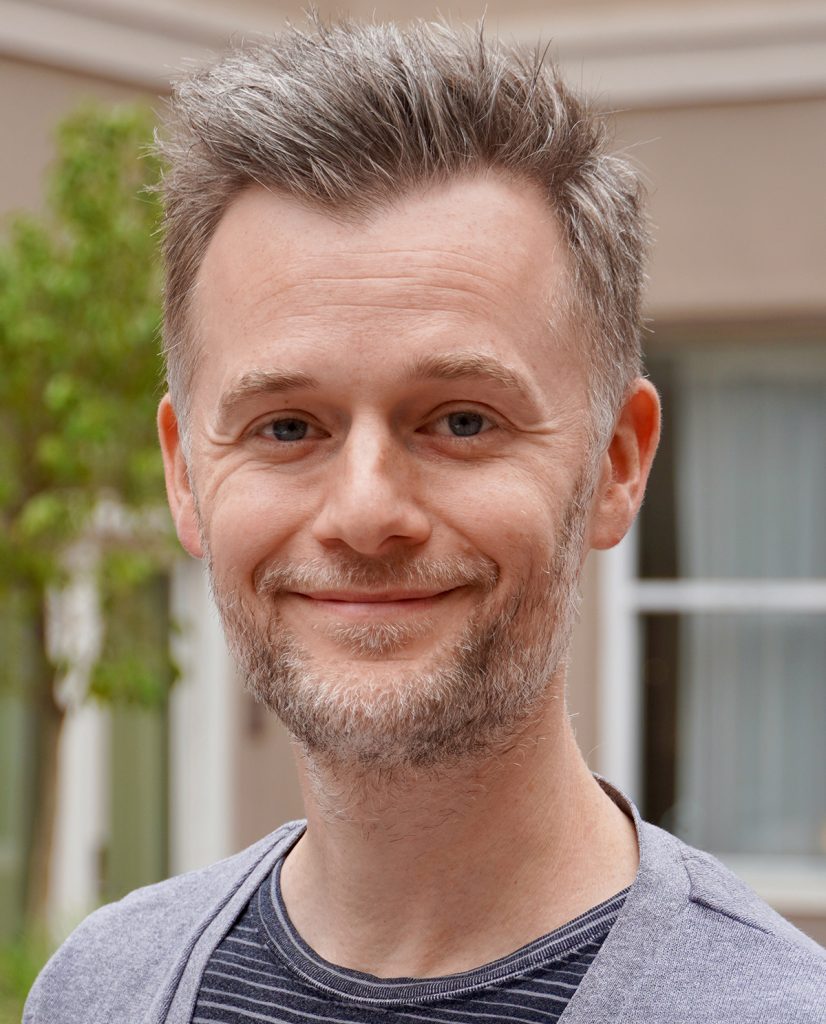

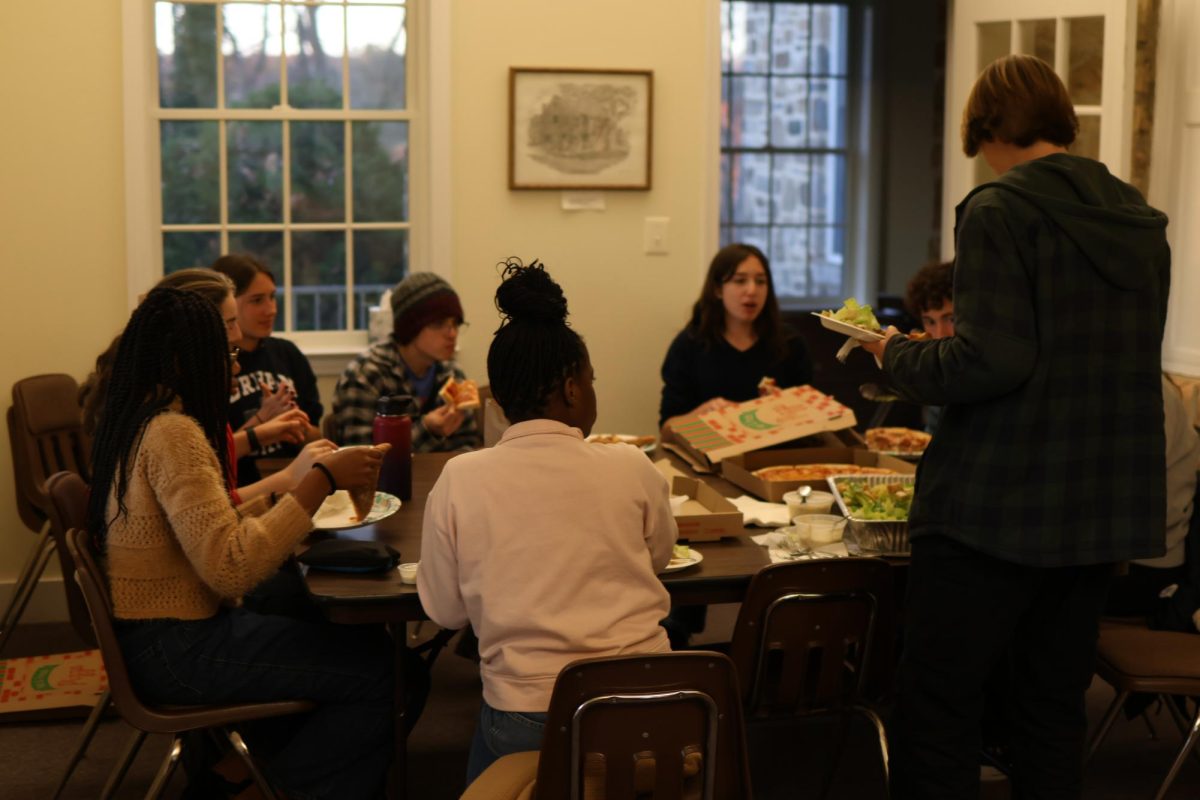

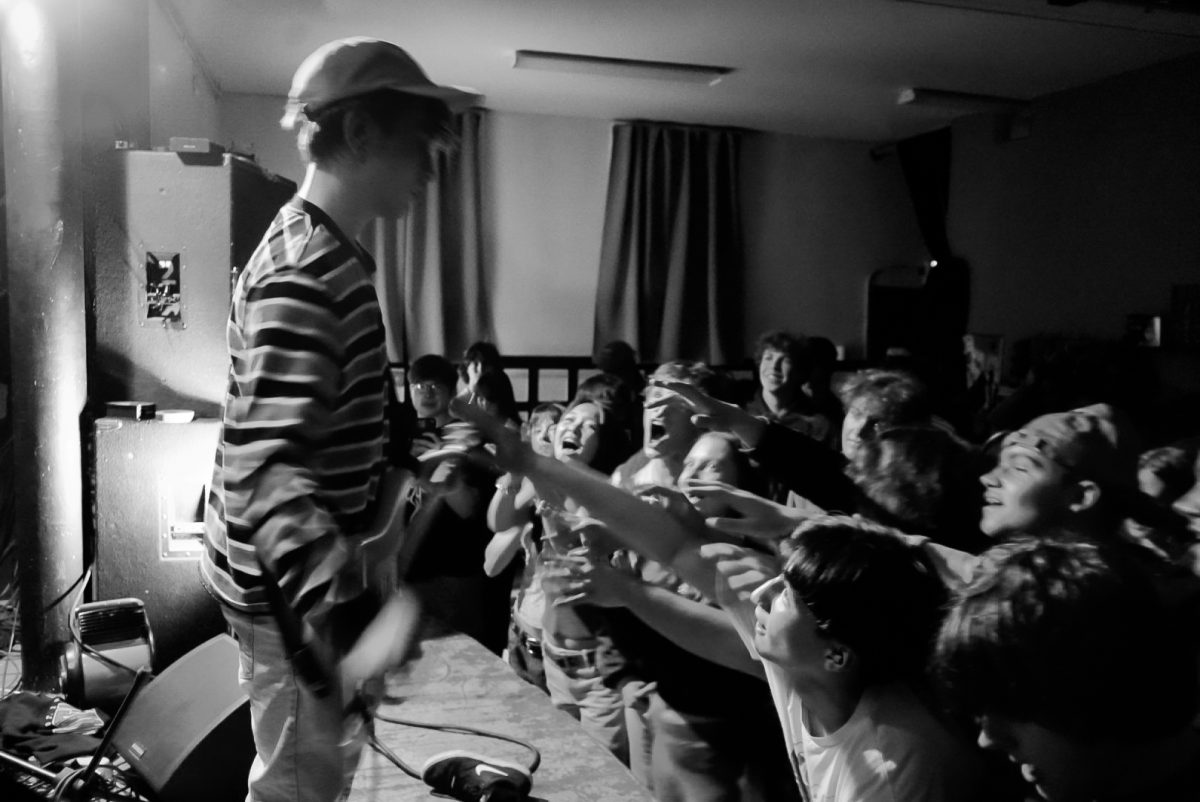

![How Freestyle Club Began [Podcast]](https://thequakerquill.org/wp-content/uploads/2025/05/charly-alvarez-Jv9untmB7G4-unsplash-1200x800.jpg)
